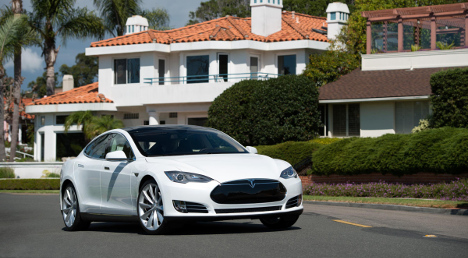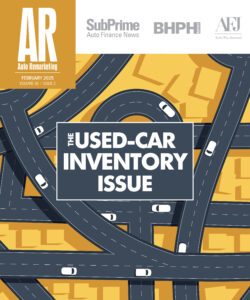Sourcing Tesla’s New CPO Program

Tesla Model S
On Thursday, Tesla chief executive officer Elon Musk revealed his new all-wheel drive version of the Tesla Model S — designated by the letter “D”, which stands for dual motor — as well as a series of impressive driver assistance systems.
And though this double-motor technology allows the car to race from 0 to 60 mph in 3.2 seconds, the automaker also confirmed another piece of news that could be even more exciting for aspiring Tesla shoppers: the ability to enter the brand at a lower price point.
In an Automotive News story, the company confirmed last week it will be offering a certified pre-owned program for the popular Model S with it’s first models sold now nearing the three-year-old mark — prime picking time for certified programs.
Tesla is entering the used-car market, welcome news for shoppers who can’t shell out upwards of $70,000.
But with such a small niche market and a limited number of Tesla vehicles selling each year, the question remains, how is the automaker going to source this new program? Well, Tesla has that covered, too.
The automaker is giving Tesla Model S owners the option to return the car after three years and recover 45 to 50 percent of its sticker price.
The ‘Nature’ Of The Buyer
As to whether or not Tesla will get the returns they want and need for their fledgling CPO program, Edmunds.com senior analyst Ivan Drury said you first have to look at the nature and economic standing of the majority of Tesla buyers.
Drury said it’s all about convenience with the elite buyer, and this buy-back program offers just that.
“I think that with the person who is initially buying the Tesla, who had the money and means, this is an offering of convenience. They provide the same expectations that a leasing program provides consumers, and these people don’t have to worry about selling it," said Drury. “That’s the major thing about leasing. The owner doesn’t have to worry about dealing with somebody online, or on the phone — it cuts out the middle man, and with all the convenience of this program, I don’t think Tesla is going to have a problem.”
Drury also pointed out that Tesla customers are very interested in the automaker’s next moves and newest products, a trend that may serve their buy-back program well.
“I believe they are going to get a really high return rate with this offer, especially because they are going to have more models, extended range, and if someone just wants the next Model S or want the new features, they are going to take advantage of the return program,” Drury said.
In other words, many buyers of the means needed to purchase a Tesla will already be in the market for a new vehicle in a matter of a couple of years.
Branding and marketing company DXagency chief executive officer Sandy Rubenstein says the opportunity to know what your trade-in value is even before you drive the car off the lot allows Tesla’s customers to plan accordingly and “provides great comfort.”
“You know what to expect when you return after three years and the 'haggle' for the trade-in price is a non-issue. I think this is incredibly attractive for the consumer who is searching for $100,000 vehicles,” Rubenstein said.
The Role of Depreciation
According to ALG, Model S vehicles are depreciating 20 to 25 percent during the first year of ownership.
But Tesla quietly launched a consumer lease program earlier this year, and as those Tesla’s come back into the market, these depreciation rates could ramp up — potentially causing the buy-back offer to be even more enticing to owners.
“Generally speaking, as used supply increases prices will fall, unless demand happens to increase at the same time. The safer bet is that depreciation for the Model S will accelerate as more used supply becomes available,” said Larry Dixon, senior manager, market intelligence, at NADA. “Should prices fall off substantially (coming in below the pool of competitors specified by Tesla), it’s likely that more Model S owners would take Tesla up on their offer to re-purchase. This would increase the number of Model S made directly available to Tesla for their CPO program.”
And historically, electric vehicles, as well as luxury units, have depreciated at a quicker rate than most of their non-EV and mainstream counterparts.
That said, Tesla will still most likely have to supplement the CPO program outside of direct returns. Dixon points out two factors that point to Tesla’s potential need to look for alternative sourcing methods:
1. Only a portion of Model S owners will take Tesla up on the buyback option and
2. The buyback option carries a financing stipulation — this further dilutes the pool of potential returns.
“Tesla’s direct access to used models should be better once their leasing program matures (which is still in early stages),” Dixon said.
And if that isn’t enough, Tesla will most likely have to test out a few tried and true dealer tools to source their CPO program, such as trade-ins, auctions and wholesalers.
The New-Car Connection
To some, Tesla’s move into the used-car market may just look like an opportunity for the automaker to cash in on the used market and make more profit in the process.
But Jack Nerad, executive editorial director and executive market analyst for Kelley Blue Book’s KBB.com, pointed out that the CPO program is more so just an important tool in maintaining the “sellability” of their new vehicles.
And this effort is directly tied to resale value.
“If residual values on a particular model are much lower than average, the OEM must subsidize the new-vehicle lease rates to compensate if they desire to stay competitive, so to avoid this, OEMs support CPO sales to keep residuals up,” said Nerad. "Offering some sort of residual value guarantee is also valuable in persuading consumers to purchase an untried product from a startup manufacturer.”
And when sourcing a CPO program, it all comes down to availability.
“The fact on availability is that there are just a limited number of Tesla vehicles on the road; most of them still in the hands of the original owners. The only way for Tesla to guarantee a supply of used Teslas is to make and sell more new ones,” Nerad said.
And Tesla doesn’t seem to be having any problem in that department.
On top of the new all-wheel drive versions of the Model S — which buyers will start receiving this winter — Tesla has promised the next generation of vehicles will retail for as little as $35,000.
What Musk is calling the Tesla Model 3 is expected to hit the markets by 2017.
This is the first installation of a three-part series highlighting Tesla’s new CPO program. Stayed tuned to Auto Remarketing Today for further stories focused on legal concerns, market expansion, impact on Tesla’s new-vehicle sales, as well as what Tesla might be able to charge for its CPO models.

 View The Latest Edition
View The Latest Edition

